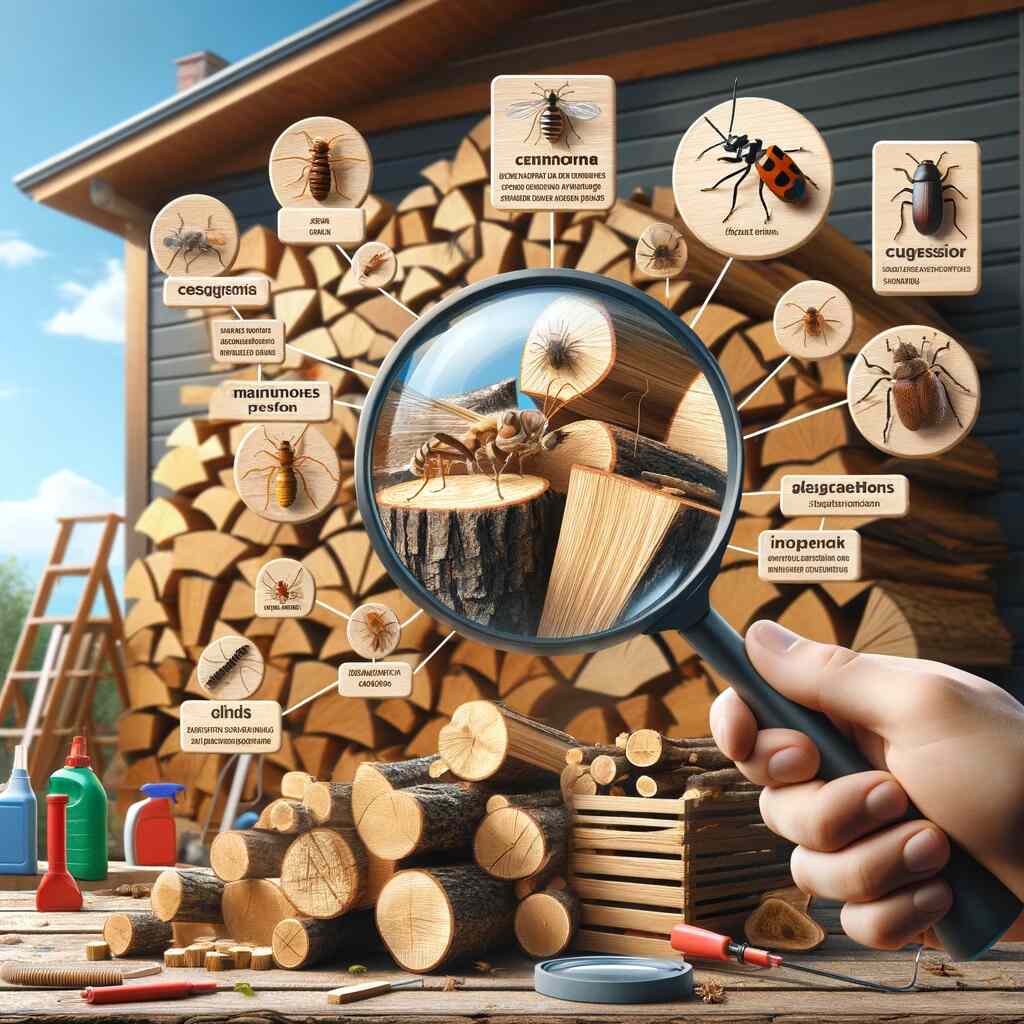Firewood is an essential resource for heating homes during the cold winter months and for enjoying outdoor activities like camping and bonfires. However, firewood storage areas can attract a variety of pests that not only compromise the quality of your wood but can also infest your home or spread diseases. To ensure that your firewood remains clean, safe, and pest-free, it’s crucial to know how to identify and manage pests in your firewood storage areas.
In this comprehensive guide, we will explore the various types of pests that can infest firewood, how to identify them, and effective management strategies to keep your firewood pest-free.
Understanding the Importance of Pest Management in Firewood Storage
Pest management in firewood storage areas is essential for several reasons:
- Protecting Your Home: Pests in firewood can easily make their way into your home. Insects like ants, termites, and wood-boring beetles can infest your property, causing damage and potentially costly repairs.
- Preventing Disease Spread: Some pests, such as rodents, carry diseases that can be transmitted to humans. Proper pest management reduces the risk of disease transmission.
- Ensuring Firewood Quality: Pests can degrade the quality of your firewood. Infested wood may become unusable or produce less heat when burned.
- Environmental Concerns: The transportation of firewood with pests can lead to the introduction of invasive species in new areas, causing ecological imbalances.
Types of Pests That Infest Firewood
-
Insects
Insects are among the most common pests that infest firewood. They can be broadly categorized into two groups:
a. Wood-Boring Insects: These pests lay their eggs on or inside the wood, and the larvae tunnel through the wood as they develop. Common wood-boring insects include:
- Termites: Termites can cause extensive damage to wooden structures. Subterranean termites are particularly destructive and can infest firewood.
- Powderpost Beetles: These beetles tunnel through wood, leaving behind small holes and powdery sawdust.
- Carpenter Ants: While not directly damaging to firewood, carpenter ants can nest in it and are often an indicator of moisture problems.
b. Bark Beetles: Bark beetles lay their eggs under the bark of trees, and their larvae feed on the inner bark. They can infest firewood stored outdoors, especially if the wood is not properly seasoned.
-
Rodents
Rodents like mice and rats are attracted to firewood piles as they provide shelter and a source of food. These pests can also carry diseases, making them a significant health concern.
-
Mold and Fungi
Mold and fungi thrive in damp or moist conditions. Firewood that is not adequately seasoned or is exposed to rain can develop mold and fungi, which can affect its burn quality and cause health issues when the spores are inhaled.
-
Wildlife
Larger pests such as raccoons, squirrels, and birds may seek shelter in firewood stacks, and their presence can lead to contamination and damage.
Identifying Pest Infestations in Firewood
Proper identification is crucial for effective pest management in firewood storage areas. Here are some signs to look for when identifying common pests:
-
Insects:
- Small exit holes: Wood-boring insects often leave small holes in the wood surface.
- Powdery sawdust or frass: The presence of fine, powdery debris near the woodpile may indicate the activity of wood-boring insects.
- Piles of wings: Termites and flying ants shed their wings near the infested wood.
-
Rodents:
- Droppings: Mouse and rat droppings are often found in and around the woodpile.
- Gnaw marks: Rodents leave distinctive gnaw marks on firewood.
- Nests: Rodents may build nests within the woodpile.
-
Mold and Fungi:
- Visible mold growth: Mold and fungi often appear as fuzzy or discolored patches on the wood surface.
- Musty odor: A strong, musty smell is indicative of mold growth.
-
Wildlife:
- Chewed or damaged wood: Larger pests like raccoons and squirrels can leave behind obvious signs of damage to the wood.
Effective Pest Management Strategies
Once you have identified a pest infestation in your firewood storage area, it’s crucial to take immediate action to manage the issue. Here are effective pest management strategies:
-
Proper Wood Storage:
- Elevate the Woodpile: Place your firewood on pallets or other elevated structures to keep it off the ground. This helps prevent ground-dwelling pests like termites from accessing the wood.
- Cover the Stack: Use a waterproof tarp or cover to protect the firewood from rain and moisture. This reduces the likelihood of mold and fungi growth.
- Store Wood Away from Structures: Keep the woodpile at least 20 feet away from your home or other structures to minimize the risk of pests migrating indoors.
- Rotate the Stack: Use the “first in, first out” method to ensure that older firewood is used before newer wood. This reduces the likelihood of pests establishing themselves in the woodpile.
-
Regular Inspection:
- Conduct regular inspections of your firewood storage area to identify signs of pest infestations early. Address any issues promptly to prevent the problem from worsening.
-
Remove Infested Wood:
- If you discover wood that is heavily infested with pests, remove it from the storage area immediately and dispose of it properly. Do not burn infested wood, as it can release harmful toxins and spores into the air.
-
Use Pest-Resistant Wood:
- Consider using naturally pest-resistant wood types like cedar or hardwoods for your firewood, as they are less attractive to many pests.
-
Seal Cracks and Openings:
- Seal any cracks or openings in your storage area or home’s foundation to prevent rodents and insects from entering.
-
Pest Barriers:
- Use pest barriers such as hardware cloth or wire mesh to wrap around the woodpile. This can deter rodents and other wildlife from accessing the firewood.
- Insecticides and Pest Control Professionals:
- In severe infestations, you may need to use insecticides approved for wood treatment or consult a pest control professional to address the issue.
-
Keep the Area Clean:
- Remove debris, leaves, and other organic matter from around the woodpile, as these can provide hiding places for pests.
-
Properly Season Your Firewood:
- Seasoning firewood by allowing it to dry for at least six months can reduce the moisture content, making it less attractive to pests like termites and fungi.
-
Education and Awareness:
- Educate yourself and others in your household about the importance of pest management in firewood storage areas and how to identify potential problems.
Conclusion
Proper pest management in firewood storage areas is essential to protect your home, ensure firewood quality, and prevent the spread of diseases. By understanding the types of pests that can infest firewood and knowing how to identify them, you can take proactive steps to manage and prevent infestations. Implementing effective pest management strategies, such as proper wood storage, regular inspections, and removal of infested wood, will help you maintain a pest-free firewood supply for safe and enjoyable use throughout the year.
Remember that prevention and early intervention are key to successful pest management in firewood storage areas.





